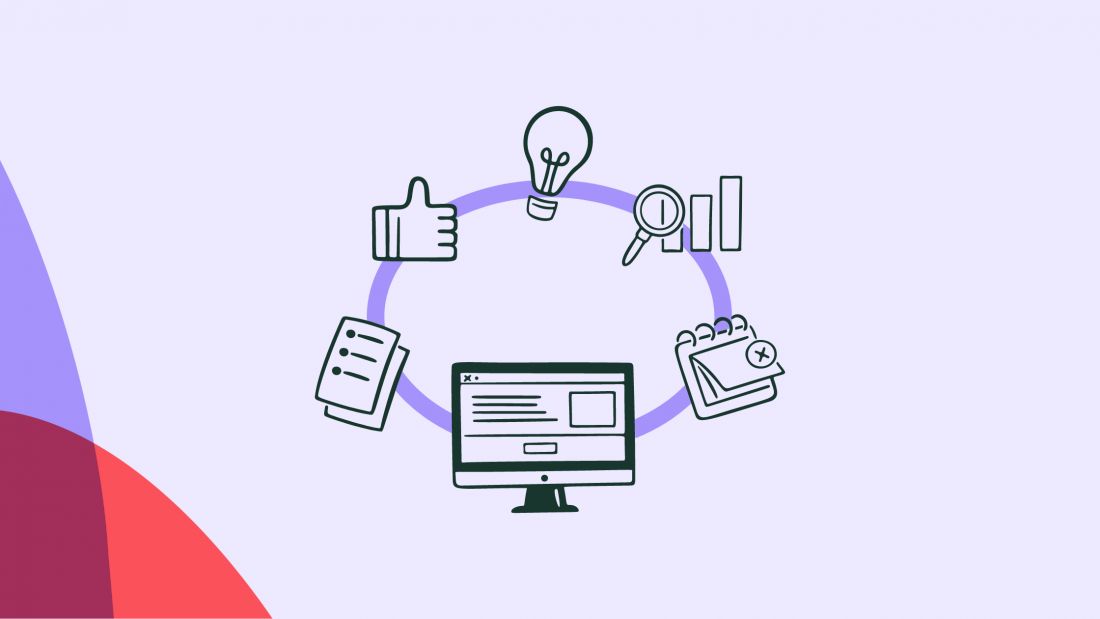You’ve spent months building the perfect product—only for your ‘ideal’ users to churn as soon as they sign up. “What went wrong?”
Achieving success with your product isn't just about creating a fantastic app. It's equally about guiding users to realize the full value of your app to help meet their needs and get them to stick around. So, if you don’t have a clear plan to nudge users toward these "aha!" moments, you’re leaving money on the table.
In this article, we’ll provide a simple framework to create a solid product adoption strategy. We'll also give you proven product adoption tactics to accelerate the process and achieve better customer success.
Production adoption is about guiding users to activation and winning their loyalty for the long run
Designing a product adoption strategy is the key to unlocking higher adoption rates and better retention
A fully-fledged adoption strategy looks at your current state of adoption, establishes product goals, defines tactics, and identifies metrics and KPIs to highlight success
The best ways to drive adoption are by creating user personas, personalizing onboarding flows and in-app experience, and iterating your product based on user feedback
Why you need a product adoption strategy
Product adoption is helping users internalize and experience the value of your product so that it becomes a part of their routine. Adoption turns first-time users into active users, and—eventually—into power users. It creates product stickiness for your users and customer stickiness for your brand.
Unlike what most people believe, product adoption isn’t an end destination you can reach and call a day. Instead, it's an ongoing loop of customers moving from a place of awareness to activation and adoption.
It happens in stages and repeats itself:
The loop starts at the awareness stage when a user discovers your product
It starts again when they become interested in your app
It continues as customers go through different stages of product adoption or you add new features or product developments
Product adoption is the key to delivering a seamless user experience, improving retention rates, and minimizing churn. It also nurtures brand loyalty and stabilizes revenue coming from loyal user cohorts.
Successful product adoption means users will invest more in your app and are more likely to upgrade their plans for additional features.
This can help your product expansion plans as these customers are willing to pay for new features. It’s also a sure-fire sign that they’re likely to recommend your product to their colleagues—outside of running an NPS survey.
SaaS businesses can reap all these benefits (and more) with a customer-centric product adoption strategy. Let’s get stuck into your quick guide on creating and executing a product adoption strategy to maximize ROI.
How to successfully create and execute your strategy
To design a bulletproof product adoption strategy, you’ll need to:
Identify your current situation
Establish your desired adoption goals
Outline tactics to hit these goals (plot twist, they’re coming your way)
As we explore each step, we’ll share a few tried-and-tested best practices to help you increase product adoption the right way.
Where are you now? Evaluate current product adoption rates
The first step to choosing your product adoption tactics is reviewing your current product experience and user behavior. You should also audit your existing product growth and state of adoption to set the right benchmarks for your future product roadmap and KPIs.
Here are a few ways to measure success and analyze your current adoption levels.
Measure the product adoption rate
Calculate the adoption rate for new users for the last six months or more using the following formula.

Track feature adoption rates
Count the percentage of users applying your app’s core features by using this formula.
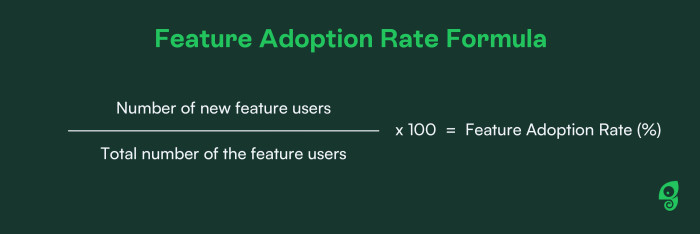
Evaluate adoption funnel
Look at the entire user journey to see where users drop off and why. This way you will identify the adoption bug and understand friction points in your adoption funnel.
Make a copy of our friction log template to get started quickly. It will help you better understand the pain points your users experience while using your product.
This will reveal the gaps in your current strategy. Use this data to set your adoption goals aimed at enhancing customer success. Identify different behavior cohorts and analyze their specific adoption rates, from there, establish the right metrics to track your progress for each cohort.
Where do you want to be? Set your adoption goals
Once you’ve done the legwork to review your current adoption strategy, define where you want to be and what you want to achieve through a new strategy.
Product adoption isn’t a one-and-done process that you can tick off from your checklist. Instead, think of it as an experiment.
Remember to make the goal-setting process a cross-functional activity. You need to keep everyone on the same page and fully motivated once the strategy is underway.
Involve the Customer Success, Marketing, and Product teams, as well as everyone else involved in product development and growth to establish the right goals and provide the insights you need to make informed decisions. Everyone has their own tech and data stack that will prove exceptionally valuable for you to get this job done.
How will you get there? Define tactics you will use
Now that you have your destination, it’s time to create an itinerary and set sail! Take a look at the below product adoption tactics to design a standout product experience, reduce friction, and ramp up user engagement.
Sail on, dear friend!
8 steps for an airtight product adoption strategy
Maybe your users need some extra hand-holding to get the best out of your product. Or maybe they need better support when they get stuck.
A product adoption strategy identifies all possible ways to streamline the user experience and accelerate adoption. Take a look at our eight-step framework to cover all bases and build your strategy from scratch.
1. Create user personas
To build a relevant and meaningful user experience, you need to know who your users are. A mismatch in your ideal customer profile and product functionality can leave your ship stranded in the middle of nowhere.
Identify your ideal customer profile and segment it into separate user personas. These personas are individual user types that represent a part of your target audience.
For every persona, collect demographic and firmographic details. Plus, make sure to include:
Motivations
Pain points
Product expectations
Activation milestones
Decision-making power
This research-backed customer data is crucial to making product onboarding decisions that talk to new users yet remain scalable.
2. Map out user journeys
The user journey is how new users experience and navigate your product once they sign up. A user journey map defines the possible actions they'd take to interact with the product to:
Complete their jobs to be done
Finish all activation milestones
Become fully engaged with your app
Think of journey maps as the visual representation of how a user’s experience navigates through different parts of your product.
Unlike a customer journey map, which focuses on the different stages before prospects become paying customers, user journeys cover their in-app experiences; everything from onboarding and beyond.
Once you’ve created user journeys and personas, survey users from every persona to identify their pain points, expected values, and timelines to achieve these values. You can combine this information to design a speedy, frictionless user experience and drive adoption for different types of users by building a personal yet scalable experience. Speaking of personalization…
3. Create a personalized experience
Signing up for your product and learning its complete functionality can be a hassle for some users. They have to put in extra time and effort to understand your product capabilities and configure it for their needs or tech stack.
You can convince them to make this switch—despite all the hassle—and deliver value quickly by creating personalized experiences. Here’s how:
Identify core needs for every user profile and share product usage reports showing how well they’re meeting their needs
Offer tailored customer support to every user through in-app widgets, contextual tooltips, and self-serve guides at multiple points in the product experience
Use case-specific messaging customized for each user with details like their first name, job title, company size, and job to be done, as Airtable does in this example
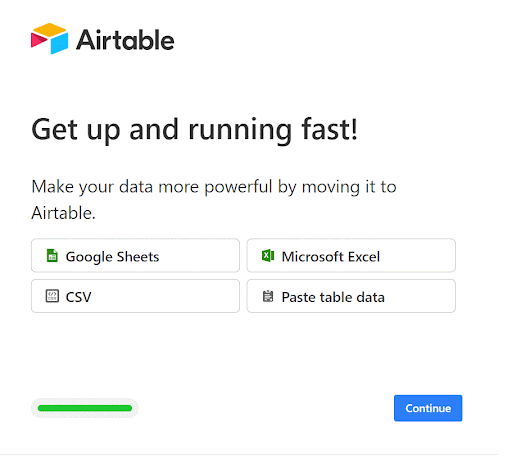
Overall, it’s good to know that 58% of customers consider a personalized experience a must-have while interacting with a product. Customizing your product to individual user needs shows customers that your app is designed for their needs and is worth the time to invest.
4. Excel at user onboarding
The user onboarding process sets the first impression for your product. A broken or cumbersome onboarding flow can instantly ruin that first impression and churn users.
To avoid this, design your onboarding process to guide users to their goals as quickly as possible. Here’s how:
Get a pulse of your users through feedback surveys and understand their expectations for the onboarding process
Create onboarding checklists and product walkthroughs to guide them through the interface and manage expectations, like this example from Grammarly
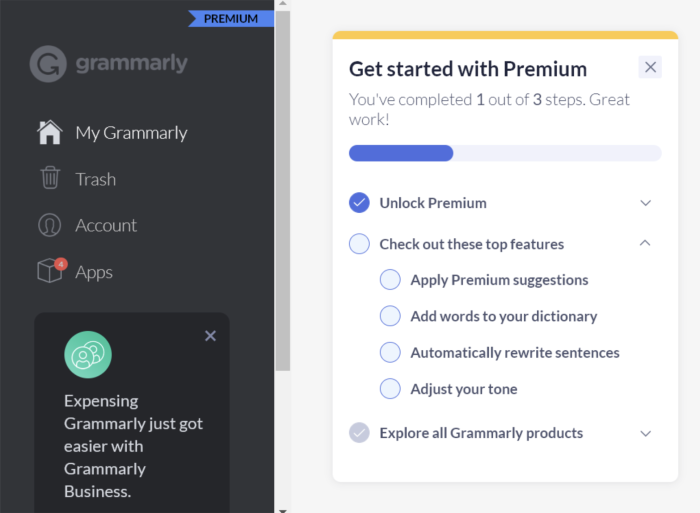
Create templates for new users to start with a reference point instead of a clean slate, like Trello prompts you to create your first board and shares some of its most popular templates to choose from. Thank you, Trello, you just made adopting your product into our daily workflows that much easier.
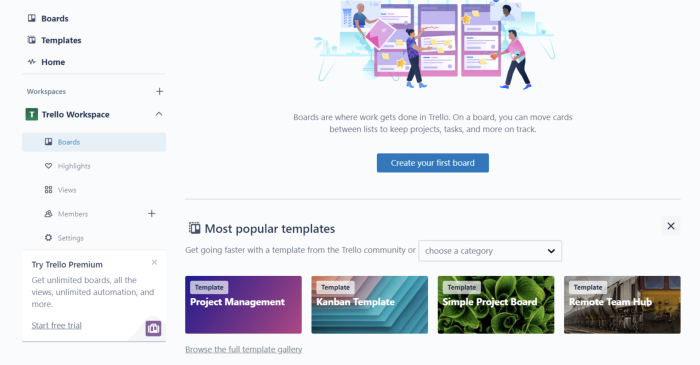
Remember: Your onboarding process can make or break your user experience and impact your adoption rates. Go the extra mile to add personalized content in the onboarding process using insights from real user cohorts.
5. Set clear activation milestones
Setting parameters for user activation is a no-brainer when designing your product adoption process. Activation milestones are a set of actions a new user has to complete to understand the actual value of your product.
Your product probably has many advanced features that new users can try. However, to ensure that new user experiences get to that "aha" moment, you need to first help them understand the basic product functionality and get their hands dirty.
To do this, gather inputs from your activated users to analyze their criteria for activation. Use this information to define a set of core features and actions that every user should perform once they sign up. These would become your activation milestones.
Here are a few examples of activation milestones for different business models, gathered by Lenny Rachitsky and Yuriy Timen and shared within one of Lenny’s Newsletter editions.
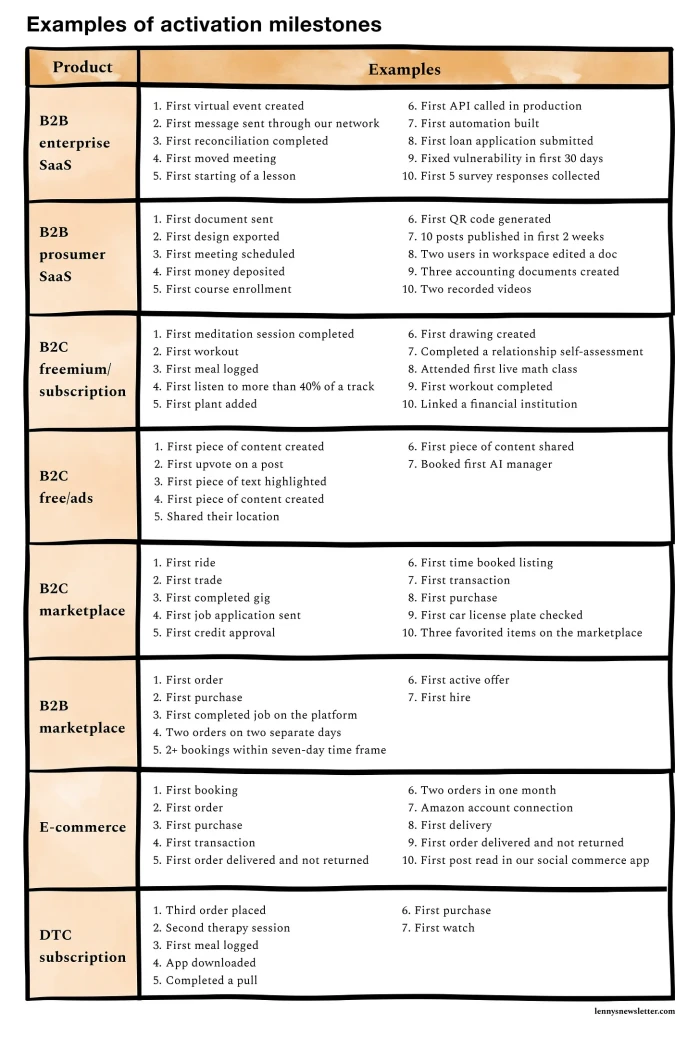
Activation milestone examples gathered by Lenny Rachitsky and Yuriy Timen
6. Empower users through in-app messaging
Use in-app messaging to spotlight critical features, offer more value, and increase product usage. Offer contextual self-serve support, like in-app widgets and guides, at different places in your product to remove barriers from activation.
At Chameleon, we call this kind of in-app messaging Launchers. And here’s an example of a Launcher in a form of a help menu that we recently created. This way, our new and long-term users can quickly launch a chat, read about feature updates, or even join one of our webinars.
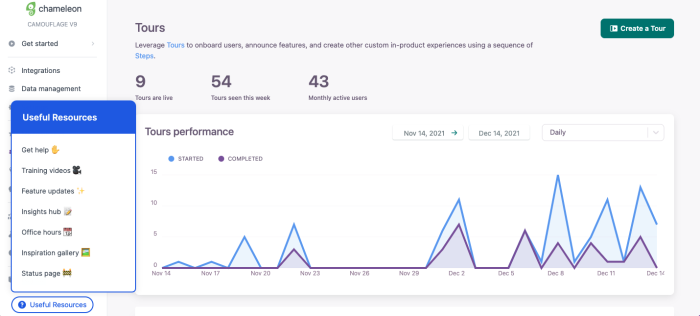
7. Iterate on your product and keep improving UX
Analyze user interactions within your app to collect data on user engagement and understand how user groups move through your product.
Here’s how you can analyze your user behavior:
Divide your existing users into different segments
Watch session recordings for users in each segment and identify trends
Collect user feedback using Microsurveys of feedback widgets
Compare the qualitative and quantitative customer data
User behavior data and feedback will create many opportunities for upgrading the user experience.
Optimize your product for all user personas by:
Adding new features that better serve users’ evolving needs
Improving UI design to ramp up product usage frequency—make your product a great place to be
Changing aspects that hamper the user flow and slow down engagement—cut those friction points!
Conduct UX research to see what you currently lack and how to bridge these gaps. Rely on your target users to get the right inputs for changes in the product experience.
8. Identify success criteria
Your adoption strategy is incomplete without the right product adoption metrics to measure success and track product growth. Schedule periodic assessments to review your progress regularly. You should also choose your success criteria according to your adoption goals.
Some success criteria can be:
Feature adoption rate
Daily/monthly active users
Product stickiness
Track progress with these metrics to see how successfully you've met user needs and driven them to realize the total value of your product.
Create a winning product adoption strategy
Product teams spend months designing a product but often leave adoption as an afterthought. Don’t let this scenario happen to your team.
To drive product adoption at scale and deliver immediate value to users, you need a well-thought adoption strategy before the development process even begins.
Keep the focus on your users and collect their input to shape your strategy. Double down on personalized UX, seamless onboarding, hassle-free support, and continuous iteration to maximize product adoption.
Ready to take control over your product adoption?
Master the cross-team collaboration with a suite of Chameleon features, keep track of any changes, and ensure your users see the right in-app messages at the right time.

